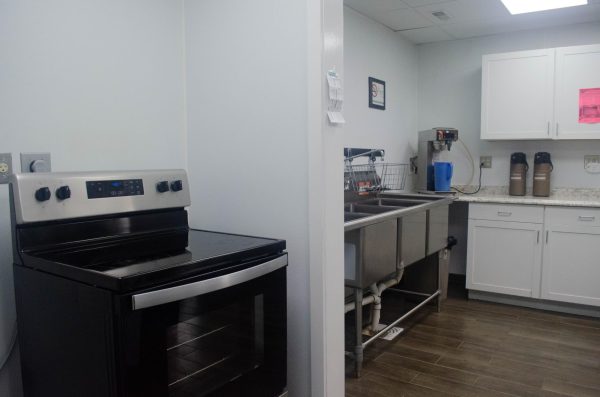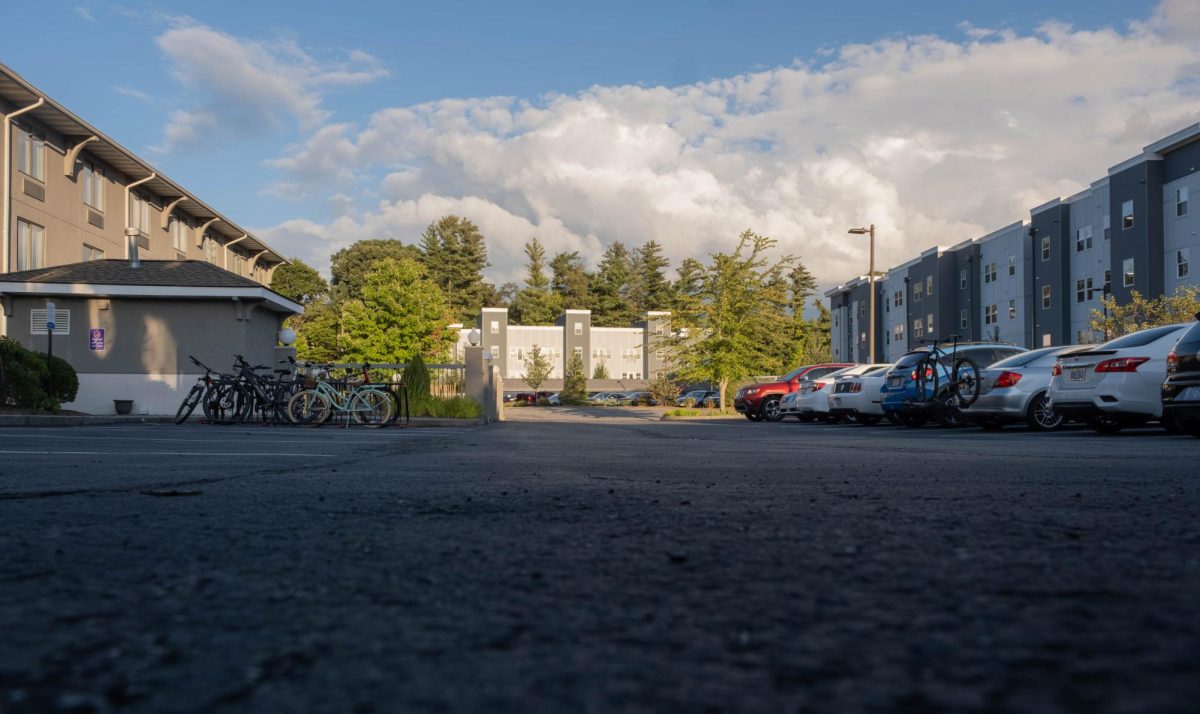The first few weeks into the fall 2023 semester were troubling for transfer students living in the newly transformed Sleep Inn Boone University Area, which was converted into student housing.
In March 2023, the university entered into a service agreement with the hotel to meet the demand for on-campus housing with incoming students.
The Sleep Inn, located at 163 NC-105 Extension, has the space to accommodate 140 students with 58 double occupancy rooms and 24 single occupancy rooms.
Director of University Housing Brandon Nelson said the addition of the Sleep Inn to University Housing was to help address the affordability issue of off campus housing. The addition allowed university housing to add 100 more beds to the transfer community at App State.
Nelson said the goal is for the Sleep Inn to be a temporary solution so that the university can work on building and creating more intentional housing.
The hotel-style, co-ed by rooms housing includes laundry, kitchen facilities and wireless internet access, but junior transfer student Kayla Swiatkowski said these additions hardly meet the standards of living provided by other on-campus housing facilities.
Swiatkowski said a major concern has been internet connection. For the first two weeks of classes she and her fellow residents struggled with slow internet connection that hindered their ability to finish assignments in their living space.

On Sept. 1, University Housing sent out an email to all Sleep Inn residents regarding the steps they are taking to improve internet access for residents.
The email stated that the University IT staff would be doubling bandwidth to 2GB as well as adding two access points on the third floor of the building, but the internet provider had to come install the router.
The individual device bandwidth was also increased from 14MB to 50MB.
Nelson said the internet was upgraded to 2GB about a week-and-a-half ago and that recently App State IT removed the restriction on speed, so “we’re in good shape there,” Nelson said.
App State IT has since performed additional checks to see how internet connectivity is throughout the building and Nelson said that most of the building uses 1.2GB, so the upgrade provides well over the amount of coverage needed.
However, as of Oct. 20, Swiatkowski said she has not noticed any improvement in the internet connection.
Swiatkowski said residents were also blindsided by parking guidelines as the building holds 140 residents and there are only 14 parking spots available for residents to park temporarily, not including overnight parking.
Swiatkowski said University Housing told residents to refer back to the University Housing website to answer questions about parking, but she and other residents did not see anything about parking. Swiatkowski said that residents were not informed that they needed to buy parking passes for other university lots.
By then, Swiatkowski said university parking permits had been sold out for almost two months.
Nelson said University Housing has always tried to be transparent and noted that incoming transfer students were made aware of their options before move-in.
“We’ve always really tried to be transparent on what buildings have what because I don’t want anybody to come here and be like ‘I didn’t know about that,’” Nelson said.

An email from housing sent out April 2 said there was limited parking available for the Sleep Inn housing option and that guaranteed parking options for students included: parking at the 105 or State Farm Lot and taking AppalCart.
Housing was able to secure a lot that is closer to the Sleep Inn building that provides about 20 spaces, Nelson said, but transportation told housing that around half of the Sleep Inn residents have university parking passes.
“We don’t have 70 spaces unfortunately,” Nelson said.
As for the living amenities or lack thereof, the building of around 140 residents share two washers and two dryers, said resident Leo Barber, a junior computer science major.
“Doing laundry here is an actual nightmare,” Barber said. “This is amplified by the fact that parking is so bad that even if you have a car, the best options are walking with your laundry elsewhere or carrying it on public transit.”
In an email sent out to residents from University Housing, residents were directed to use laundry rooms that are located in other dormitories, including the other transfer student dorm Mountain Laurel Hall, which is about a mile away down the Highway 105 Extension from Sleep Inn.
Nelson said that before the Sleep Inn became student housing, the hotel only had one washer and dryer, but housing had electrical run into the laundry area to add an additional washer and dryer.
However, Sleep Inn residents still have AppCard access to Mountain Laurel to do their laundry.
In addition to the lack of amenities, Barber said the building recently got a singular oven for the building’s residents to share.
Residents have requested more furniture in the shared common spaces for studying and socializing, but Barber said University Housing added a couch instead of the tables and chairs residents asked for.
“Mountain Laurel Hall also has more study and lounge space if you are looking for another area outside of the Sleep Inn,” University Housing’s email said to Sleep Inn residents.
Nelson said that recently housing converted an empty room into a study room as well as adding furniture to the lobby to create soft seating.
Swiatkowski said the study room/lounge, “is just a cleared out resident room with chairs and a TV on the second floor.”
She said no tables or space to do work were added to the room.
Housing also added a ping pong table to the common area for residents to enjoy, as well as a cornhole set that residents can check out from the front desk.
“We’re trying to as we learn, make adjustments,” Nelson said.
Currently, Nelson said that housing is working with La Quinta to try and utilize their ballroom space for transfer events, but until then, Sleep Inn residents can take a shuttle to Mountain Laurel to take part in transfer community activities.
Both Swiatkowski and Barber said transportation to and from Sleep Inn has been an issue because of the AppalCart bus app ETA SPOT and inconsistencies with the routes that come nearby.
Swiatkowski said she and her fellow residents have had to cross the busy four-lane intersection numerous times, which she said is a safety concern for herself and others.
“Sleep Inn residents do not feel heard,” Barber said. “We have all been complaining and many of us are incredibly frustrated and feel like the university doesn’t care about us.”
Barber and Swiatkowski both echoed their frustrations with feeling like the university accepted too many transfer students.



William Bupp • Nov 9, 2023 at 10:14 am
Sound like the University would benefit from a 5-year plan that can be reviewed publicly. As a first time reader becoming acquainted with the situation it seems that little planning was involved in the “temporary” arrangement. Is there a student housing activist group available to help students voice concerns?
Michele • Oct 25, 2023 at 10:34 am
Every year ASU boosts the student population by 5k, up to 20k in 2023, yet student housing choices are horrendous! I think the main problem is that the students are required to sign a year lease and then they have to try to sublet it, and if they can’t they have to still pay the rent, so the landlords are making money yet they’re still not enough housing for students.
Tim • Oct 25, 2023 at 7:13 am
Sleep Inn is only concerned with the money that is involved with ASU housing . Money is the main factor in this situation.
Jimmy • Nov 2, 2023 at 2:16 pm
Sleep Inn has no hands involved once they sign a contract. It all falls on App State